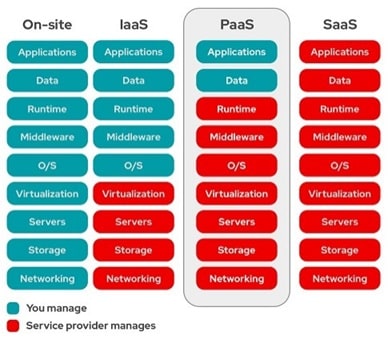Home »
IoT (Internet of Things) Tutorial
IoT (Internet of Things) Enabling Technologies
IoT Enabling Technologies: In this tutorial, we will learn about the Internet of Things Enabling Technologies such as WSN, Cloud Computing, Big data analytics, Embedded Systems, Communication Protocols, etc.
By Shahnail Khan Last updated : August 16, 2023
The Internet of Things (IoT) is a transformative technology that connects everyday objects to the Internet, allowing them to collect and exchange data for various applications. IoT depends on a number of supporting technologies to provide this connectivity. Let's explore these technologies.

1. A Wireless Sensor Network (WSN)
A Wireless Sensor Network (WSN) comprises many sensor nodes, each of which has sensors that can identify a wide range of physical phenomena, including pressure, heat, light, and more. With the rapid technical advancement of sensors, WSNs will become the core technology for IoT.
These sensors may capture a wide range of information, from location data to device orientation. Together, these sensors provide a considerable amount of data, both unstructured (such as images and movies) and organized (like GPS coordinates or acceleration readings). These sensor nodes are always linked to the internet through Wi-Fi, 3G, or 4G, ensuring a steady flow of data.
2. Cloud Computing
Cloud computing is another important IoT-enabling technology. Massive amounts of data are generated by IoT devices. Cloud solutions offer scalable and dependable storage and processing for this data. They offer data analysis, remote device administration, and secure access to information from anywhere. The cloud computing industry is dominated by Amazon Web Services (AWS), which provides a wide range of dependable, scalable, and affordable cloud computing services. As of 2023, AWS is a one-stop solution for various cloud services, from data storage to analytics.
There are mainly three main types of cloud computing -

- Infrastructure as a Service (IaaS): IaaS offers virtualized computer resources over the Internet. Users can pay-as-you-go for virtual machines, storage, and networking. It makes it suitable for tasks like hosting websites and running development environments.
- Platform as a Service (PaaS): PaaS offers a platform that enables developers to create, test, and deploy applications without worrying about the underlying infrastructure. It delivers a platform that includes operating systems, development tools, and databases. It speeds up the development process and is perfect for teams working on software.
- Software as a Service (SaaS): SaaS provides ready-to-use software applications over the Internet. These applications may be accessed by users via web browsers without the need to install or maintain them locally. Common examples include Gmail, Microsoft 365, etc. SaaS is user-friendly and streamlines software management.
3. Big Data Analytics
Big data analytics is the process of inspecting large volumes of data to reveal valuable insights, patterns, correlations, and trends. Organizations can use this analytical approach to make data-informed decisions. It entails the use of statistical analytic techniques, such as clustering and regression, to large datasets using modern tools and technologies. These analyses can uncover hidden patterns, market trends, consumer behaviours, and other useful information in structured and unstructured data sources, such as streaming and batch data.
Big data analytics is critical for businesses and industries as it enables data-driven decision-making, develops an understanding of customer preferences, and identifies opportunities and risks. Large volumes of data may be analysed and interpreted to provide businesses with a competitive advantage and increase operational effectiveness.
4. Embedded Systems
Embedded systems, such as microcontrollers and other hardware components, are critical in processing sensor data. The information gathered by these sensors isn't immediately usable. Instead, the embedded system intervenes to make it useful.
Here's how it works in simpler terms: Suppose you have several sensors that collect information like temperature or motion. This data is analogous to raw components in a recipe. The embedded system is like the chef, taking those raw ingredients (data), following a recipe (algorithm), and turning it into something meaningful. So, embedded systems are like the smart chefs of the technology world, turning sensor data into useful information and actions.
5. Communication Protocols
IoT devices communicate with each other and with the central systems via communication protocols. These protocols enable efficient and secure data transfer in IoT networks. IoT (Internet of Things) communication protocols are required for devices to connect and share data in the IoT ecosystem. There are several popular IoT communication protocols, each with unique advantages and applications. Several important IoT communication protocols are listed below:
- Message Queue Telemetry Transport (MQTT)
- Hypertext Transfer Protocol (HTTP)
- Constrained Application Protocol (CoAP)
- Bluetooth
- Zigbee
- Bluetooth Low Energy (BLE)
- Wi-Fi
- Z-Wave
These were the important IoT enabling technologies. Wireless Sensor Networks (WSN) for data collection, Cloud Computing for storage and processing, Big Data Analytics for insights, Embedded Systems to analyse sensor data, and different Communication Protocols for device connectivity are key supporting technologies. Together, these technologies enable IoT to transform businesses by giving devices more intelligence and data-driven capabilities.
Advertisement
Advertisement